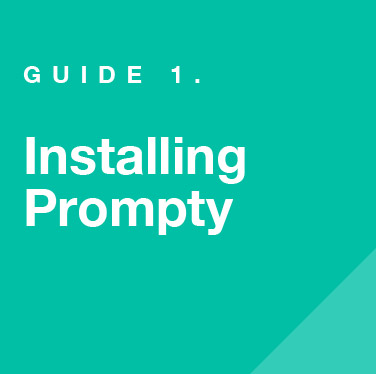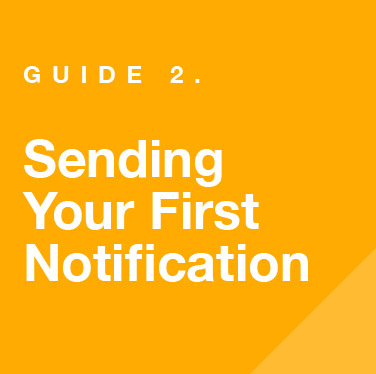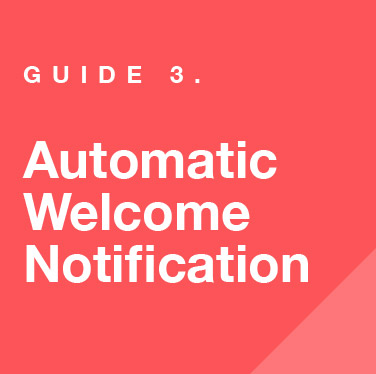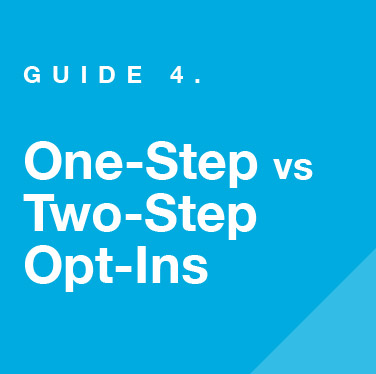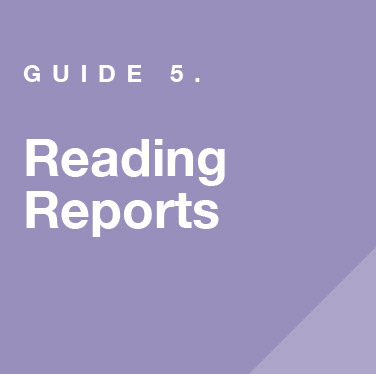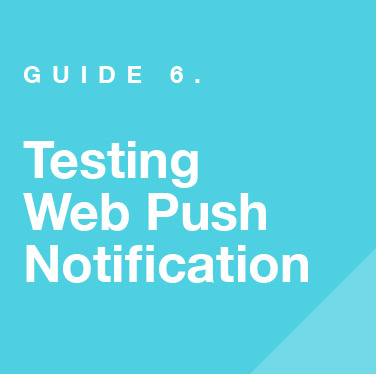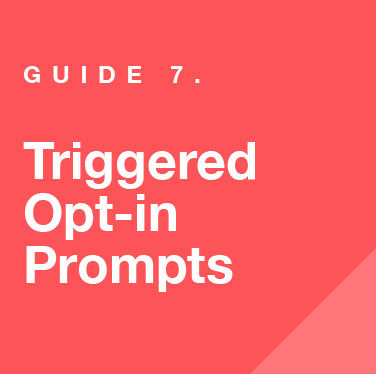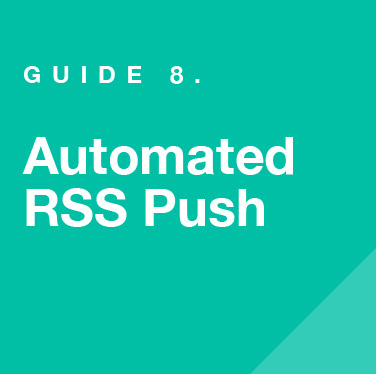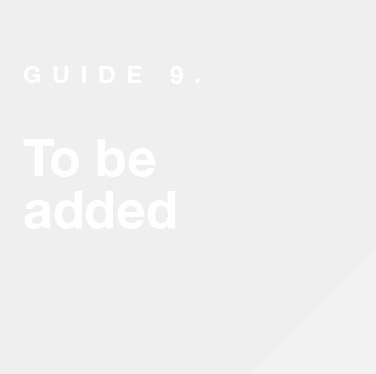PROMPTY 101
How it Works
A collection of step-by-step guides to Prompty, to quickly level up your notification game.
Getting Started
ADVANCED
GUIDE 1.
Installing Prompty
Installing Prompty
Web push notifications are a great way to turn casual readers into repeat visitors. The first step is to gather opt-ins on your website by installing Prompty on your site.
If you have a site powered by WordPress, you can use the WordPress plugin to install Prompty. For other websites, you will install Prompty manually which is a quick and easy process
Install Using WordPress plugin
If you have a WordPress powered site install Prompty using the Prompty plugin.
Step 1 – Scroll down to Plugins
Step 2 – Choose the “Add New” plugin. Type “Prompty” in the keyword box, and you will immediately find the Prompty plugin.
Step 3 – Click “Install” and then immediately click “Activate”.
Step 4 – Go to the settings, and scroll down to where it says Prompty. Click on this, and add your “Site ID” which is found on the dashboard of your Prompty account. After adding your “Site ID”, check your “Areas Enabled” that you want your opt-in prompt to show.
Step 5 – Click “Save”, and your opt-in will be available the next time someone visits your site.
Manual Installation
This manual process works for any website.
Step 1 – Install the Javascript in the Root Directory of your website
First login to Prompty.io. You can find your PromptySW.js file right on the dashboard. It will look like this:
Download this file and install it in the root directory of your website. This may require you to have SFTP access to your site. Here are some screenshots of installing Prompty in the root directory of a site using FileZilla.
Step 2 – Add Javascript Tags to Your Desired Pages
Grab the script tags we provide for you and add them to the HTML of the web pages where you want the opt-in prompt to show. The javascript will look something like this:
Here you can see an example of adding the javascript tags to the HTML of a webpage.
Installation complete! Prompty’s opt-in prompt will be shown to visitors of your site.
Controlling the Opt-In Prompt
You can control what the opt-in looks like and when it shows from inside your Prompty account. See “One-Step vs Two-Step Opt-Ins” and “Triggered Opt-In Prompts” below for more information on controlling the opt-in process.
Note: Prompty only works on secure (https://) websites. We encourage website owners to move to a secure site if they haven’t already.
GUIDE 2.
Sending Your First
Notification
Sending Your First Web Push Notification
You’ve just installed Prompty and have gotten your first subscribers. You are now ready to engage your subscribers with web push notifications. You are now ready to send out your first notification.
In this guide, we will show you how to send your first web push notification.
First, log in to Prompty.
After logging in, click on the tab that says “Notifications”. From there, click on the tab that says “One-time notification”.
Under “One-time notification”, you will fill out the following information about your notification.
- To – Recipients that will receive your notification. Select “All Subscribers” if you want to send to “All Subscribers” or “Testers” if you want to send only to a select list of testers. See “Testing Web Push Notifications” below for more information on how to send tests.
- Title – Subject of your notification.
- Message – The body/content of your notification.
- Icon – You can add an image to your notification. This could be your site logo or if you want an image specific to the notification you are posting.
- Link – The URL your subscribers will be sent to after clicking the notification.
After filling in all the necessary information, hit “Send”.
Your notification will be sent to your subscribers immediately.
You’ve just sent your first notification!
GUIDE 3.
Automatic Welcome
Notification
Automated Welcome Messages
A welcome notification is a web push notification that goes out to a new subscriber as soon as they subscribe. This simple message shows your gratitude to your new subscriber, as well as letting them know that they have successfully opted in to your web push notifications. It gets your relationship with your new subscriber off to a great start.
Prompty has a simple format for creating the perfect welcome notification for your new subscribers.
In this quick guide, we will show you how you can create a welcome notification that is automated to send after someone subscribes.
Find Your Welcome Notification
After clicking on “Notifications” you will see a box that has 3 tabs. The third tab from the left will say “Welcome Notification”. This is the tab you must click on to create your welcome notification.
After clicking on that tab, you will be presented with the following information.
- Status – A drop down box that allows you to “Enable” or “Disable” the notification.
- Title – The title of your “Welcome Notification”.
- Message – The body/content of your notification.
- Icon – You can add an image to your notification here.
- Link – The webpage that new subscribers will be sent to if they click on your web push notification.
Fill out the necessary information, and click “Save”.
Now, your welcome notification will be sent out immediately after someone subscribes!
GUIDE 4.
One-step vs Two-Step
Opt-Ins
One-Step vs. Two-Step Opt-In Prompts
When adding Prompty to your site, you get to choose between a one-step opt-in or a two-step opt-in process. Both one-step and two-step opt-in prompts are successful in gaining subscribers to your site. It is a matter of preference on which method you choose.
In this helpful guide, we will go through how to set up both a one-step and two-step opt-in prompts.
The Browser Opt-In
The first thing to understand about Prompty’s opt-in prompts is that both the one-step and two-step opt-ins both end up showing the browser driven opt-in seen below.
In one-step opt-ins, the browser-based prompt is shown directly without any additional step. With two-step, you create a call-to-action to give people a reason for why they would subscribe before they are shown the browser-based prompt. If they say “Yes” then the browser-based prompt is shown and they opt-in again. And if they say “No”, you have the opportunity to ask again in the future.
Setting the One-Step Opt-In
To set your site to use One-Step, go to Options and then select “Use a one-step prompt”. You can still use Trigger events to set when your one-step opt-in will show. Please see “Triggered Opt-in Prompts” below.
Setting Your Site To Use Two-Step Prompt
Two-Step Opt-In
In the “Options” tab, you will see your “Subscription Preference” Select the two-step opt-in customizable prompt which will be the second option. Here you will see the customizable features. These features are:
- Image – This short text box allows you to add your logo.
- Heading text – This long text box lets you add a custom heading. This heading should indicate that the site wants the visitor to subscribe.
- Opt-in message – This long text box lets you add a custom message to describe what kind of content the subscriber is opting in to.
Below is an example of what a two-step opt-in will look like. The two-step opt-in features are labeled below.
After filling in the necessary information in each box, hit “Save”, and your changes will be live the next time someone triggers the two-step opt-in feature.
That’s it! Your two-step opt-in prompt is ready for action.
The next time someone visits your site, your opt-in prompt will show the subscription preference you defined.
GUIDE 5.
Reading Reports
Reading Reports
After sending your web push notification, you will want to see how it performed. With Web Push Notifications you can see how many people received the notification, who read it, and who clicked on it. Here’s how and where to find your results.
General Results
To find your reports, click on “Results” in Prompty’s main navigation bar. There you will see your notifications broken down into five tabs based on type. Each tab will show the notifications in reverse chronological order with the most recent being at the top. The “Results” are broken into the following categories:
- “All” – This will show every notification that has been sent.
- “Manual” – These are only notifications that have been manually sent out.
- “API” – These are notifications that have been sent out through the Prompty’s API.
- “RSS” – These notifications have triggered automatically by the RSS feed of your site.
- “Welcome” – These custom notifications are sent when someone opts in to your web push notifications.
For each of these different types of notifications, you will see the Send ID, Title, Recipients and Created date.
- Send ID – The Send ID is defined by the current number of notifications that have been sent. These ID numbers will be listed in reverse chronological order with the most recent notification being the highest ID number.
- Title – The title is the name of the notification and is the same as the “Heading Text”.
- Recipients – The number of subscribers that have received your notification at the time of sending.
- Created – Created is the date in which the notification was created.
Notification Results
When you send a web push notification out, the subscriber will receive your notifications and their actions will begin to show up in your reports.
In order to see the results for a specific notification, click on the notification, and you will be brought to the individual notification report page.
- Recipients – This is the number of subscribers that Prompty attempted to send to. It is equal to the number of subscribers at the time of sending.
- Failed – These are the number of subscribers that failed to receive the message. The reason for failures vary, for example, the user may block notifications on their browser since they subscribed or their subscriptions may have expired.
- Sent – Is the number of subscribers Prompty successfully sent to. It is equal to the number of recipients minus the number of failures.
- Read – This is the number of subscribers who have been presented the notification.
- Clicked – The number of people who saw the notification, and clicked to go to your website.
Whether your notification was sent manually, was triggered as a welcome notification, what automatically sent using RSS or kicked off via the API, the reporting pages will be the same. The goal is to create great notifications with high open and clicks to keep your subscribers engaged and coming back to your site.
GUIDE 6.
Testing Web Push
Notifications
Testing Web Push Notifications
Before sending out your web push notifications to all your subscribers, you may want to test your notification ensuring that it will look and work the way you want. Prompty allows users to send out notifications to a special group of subscribers called “Testers”. Learn how to set up test notifications below.
Locate Your Testers
When you click on “Subscribers” you’ll be met with two tabs in a box:
- “Subscribers”
- “Testers”
First, click on on the tab that says “Testers”. Here you can see who your tests are going to be sent to. Your testers will be defined by their Subscriber ID, Browser, Computing Platform, Country, and date described. They will also be indicated as “Active” or “Inactive” by a number next under the field.
Becoming a Tester
The best way to put yourself on a Tester list is to opt-in to notification via your web browser and then quickly login to Prompty, find yourself on the list of subscribers and labeling yourself as a tester. To find yourself looking for the Browser, Platform and Subscribed date that matches your subscription.
To turn yourself into a tester, click on the row that matches which will bring up the subscriber detail and then click “Add Tester”.
When going back to your “Tester” list, you can see that you are added immediately as a “Tester” and will be included in all future testing of your web push notifications.
Sending Test Notifications
The next time you’re ready to send out a web push notification, you can test your notification by sending it to Testers first. To do so, create a notification that you want to send. Before sending your notification, locate your recipients under “To”. Select “Testers”.
Click “Send”, and you’re done! You can view your notification before sending it out to your subscribers.
GUIDE 7.
Triggered Opt-in Prompts
Triggered Opt-In Prompts
A trigger event is a defined circumstance that if it occurs will make your opt-in prompt show to the reader. For example, you can delay your opt-in prompt by a number of seconds to give your reader a chance to explore your content before asking them to subscribe (time delay). Or you can wait until a user as visited 3 pages on your site before asking them to subscribe. These are called trigger event and they can be set for both One-Step and Two-Step opt-in prompts.
In this quick guide, we will show how to set up your Trigger Event.
Setting up Trigger Event
First, go to the “Options” tab. Under the subscription preference, you will see the options for a “Trigger Event”.
Under the “Trigger Event”, you will have three options to choose from. The choices are as followed:
Time Delay – Setting a time delay will hold off on showing the opt-in prompt until the user has spent some time on the page. You can trigger your prompt to ask anywhere between 0 and 180 seconds of your user visiting your site. This will allow them to get to know your content before being asked to subscribe.
Scroll Delay – Another way to determine if your user is engaged with your content is how far they have scrolled down your pages. This trigger event gives the reader the opportunity to scroll through the page before being asked to opt-in. Your opt-in prompt can be set to trigger anywhere from 0 percent to 100 percent of the page scrolled.
Page Delay – A final way of making sure a visitor is engaged with your site is to wait to ask for the opt-in until they have visited a certain number of pages. You have the option to trigger your prompt anywhere between 0 to 9 pages visited before asking the visitor to opt-in.
Choose your “Trigger Event”, and fill in the necessary information.
Once you have chosen your “Trigger Event” and filled it in, click “Save” and your opt-in prompt will immediately start behaving according to the parameters you define.
Please note: if you want your opt-in prompt to show immediately, choose the Time Delay and set it for a 0-second delay.
GUIDE 8.
Automated RSS Push
RSS Automated Push
Many blogs have RSS feeds so that when a new blog post is published on the web, it is also published onto the RSS feed. Prompty can be set up to look for new blog posts in your RSS feed and to send them automatically to your Web Push Notification subscribers. This is called an Automated RSS Push notification.
Once you setup an RSS Push Notification, Prompty will monitor in your RSS feed every hour and send notifications to your subscribers if there is new content.
In this step-by-step guide, we will show you how to set up your RSS feed to send web push notifications.
Setting up your Automated RSS Push
To set up RSS-driven notifications, you need to find your site’s RSS feed. When using a site like WordPress, you can find your RSS feed by typing yourdomain.com/feed.
Next, go to the “RSS” tab under “Notifications”. Fill in the required boxes to set up your RSS notifications.
Here are the settings for your RSS-driven notifications.
- Status – You can choose when this should be “Enabled” or “Disabled”. If enabled, Prompty will check your RSS feed once an hour for new content. If found, Prompty will immediately send a notification to your subscribers using the content from your blog post.
- Feed URL – This is your RSS feed URL.
- Ignore Items older than – To ensure that Prompty is sending out recent content, you can tell it to ignore older items. This setting will determine how new a blog post needs to be in order to trigger a notification. Our default setting is 7 days.
- Title – Prompty pre-loads this box with %TITLE%. This token will be replaced by the title of your blog post.
- Message – This is the main body of your notification and Prompty pre-loads this box with %EXCERPT%. This token will be replaced by an excerpt of your blog post. The number of characters allowed in the excerpt is defined in the “Limit excerpt to” box.
- Icon – This should be your site’s logo.
- Limit excerpt to – This field defines how many characters of your excerpt will be shown in your notifications. Our default setting is 300 characters.
Once RSS is enabled and saved, Prompty will send notifications from changes in your RSS feed. To see the results for automatically triggered RSS campaigns, got to RSS tab under “Results”.

